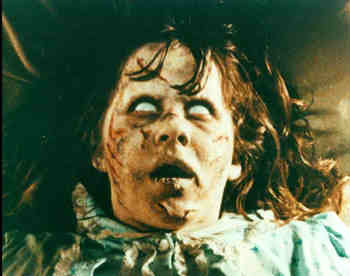
In Germany in the 1970s, a young woman named Anneliese Michel was believed to be possessed by demonic forces. Two Bavarian priests performed rites of exorcism. Anneliese died and the priests were convicted of negligent homicide. They were charged with not seeking medical attention for her and with bringing about her death.

The movie and book "The Exorcist" was based on an allegedly true case of demonic possession that occurred in Cottage City, Maryland in 1949. In the Cottage City case, the victim was a teenaged boy. Though the manifestations were not identical to those depicted in the movie, the boy and his family experienced poltergeist type activity. Objects seemed to levitate and rotate, the boy's bedclothes were ripped from him (much the same as in the Bell Witch case), and other phenomena occurred that apparently convinced Jesuit priests that he was possessed.
Ultimately, Jesuit priests and perhaps ministers of other Christian faiths participated in the exorcism and the boy was allegedly released from the possession.

The Roman Catholic Church utilizes an exorcism manual entitled "De Exorcismus et supplicationibus quibusdam" for the rites of exorcism. The Catholic Church has a formal exorcism ritual called the "Rituale Romanum". The Roman Catholic exorcism ritual begins by the words (translated from the Latin): "I adjure thee, most evil spirit, by the Almighty God..."
Exorcism of demons is common among Pentacostal sects, and sometimes the whole congregation is involved in the casting out of the evil spirits. Jews also practice exorcism, and, of course, the Christian rites originated with the Jewish methods of delivering a soul from possession by demonic forces.
In Jewish culture, the worst form of possession is by a dybbuk--a disembodied soul that possesses an individual and causes havoc and sorrow. The dybbuk must be exorcised by a rabbi/rabbis using incantations and rituals.

Demon-possessed people purportedly levitate, curse, groan, scream, vomit, contort their bodies into incredibly bizarre positions, react violently to anything having the properties of Judeo-Christian faiths--such as holy water, the mention of the Lord or Jesus Christ, religious words, crucifixes.
The allegedly possessed seem to have access to whatever secrets the exorcists and others carry within and apparently attempt to humiliate and discredit the exorcists by revealing whatever may embarrass or dismay. It is said that objects within the room where the ritual of exorcism is performed may suddenly levitate and often are smashed against walls.
In the Christian ritual of exorcism, the exorcist must exhort the demon(s) to leave in the name of Jesus Christ; the exorcist must command, not ask, the demon(s) to depart, in the name of Jesus.

In the New Testament chronicles, Jesus cast out demons. Jesus asks a demon who is tormenting a man its name(s) and the demon(s) respond with: "Legion, for we are many."
The Old Testament story of King Saul describes his possession by a spirit that tormented him. According to the story, King Saul's torment was alleviated or subdued when David (who later became King David) played his harp.
LINKS:
Wikipedia Article About Spiritual Warfare
The Irrefutable Truth About Demons
Wikipedia Article About Exorcism
The Exorcist--Article at Wikipedia.com
Exorcism-Driving Out the Nonsense
Exorcism in Russia-at About.com
The Doctrine of Demons by GŁnther Juncker